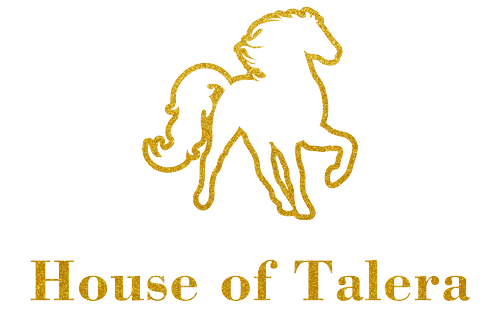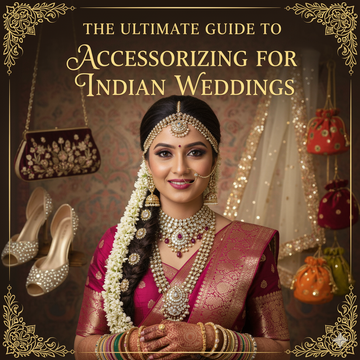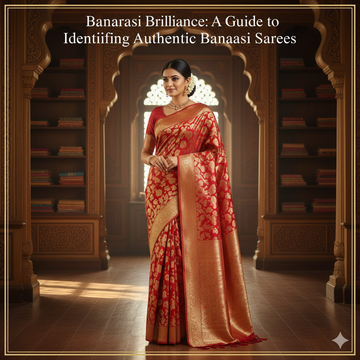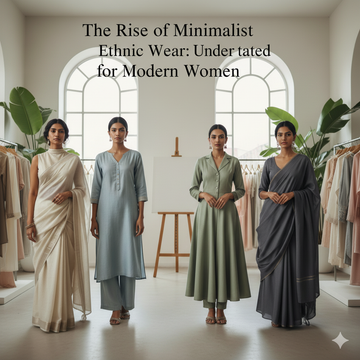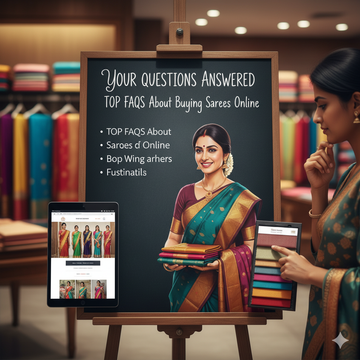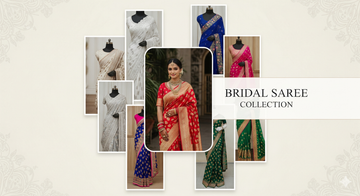
When a bride walks down the aisle in an Indian wedding, all eyes are drawn not just to her face, but to the drape that frames her presence. The bridal saree is more than a garment, it is a language of heritage, devotion, and artistry. Every pleat carries a whisper of tradition, every weave sings of craftsmanship. Choosing this centerpiece of the wedding day is not just about fabric and color; it’s about weaving memories into threads that will last a lifetime.
 Understanding the Role of Color
Understanding the Role of Color
The color of a bridal saree sets the mood of the day. While red has historically symbolized fertility and prosperity in Indian wedding fashion, brides now embrace shades of maroon, royal blue, emerald, ivory, and even pastel blush tones. A pale gold Banarasi with intricate zari work may radiate understated grandeur, while a scarlet Kanjivaram can command the room with fiery vibrance. Instead of thinking only about trends, consider the undertones of your skin and the cultural nuances of your community. Some traditions frown upon black or white for weddings, while others celebrate golden and ivory hues as auspicious. Color is not just a visual choice; it is a statement of legacy and personal aura.

Fabric: The Soul of the Saree
A designer bridal saree is distinguished not only by embroidery but also by the very foundation of its fabric. Silk remains the queen of Indian textiles when it comes to weddings. A Kanjivaram silk drapes heavily, exuding royal weight, while a soft georgette or chiffon allows more fluidity and ease for long rituals. Net sarees with sequins shimmer under evening lights, though they may lack the staying power of traditional weaves. If comfort is a concern, brides often consider the lehenga saree, which blends the fluid drape of a saree with the practicality of a lehenga skirt. Think about how long you will wear it. The ceremonies can stretch for hours, and fabric choice will decide whether you shine with comfort or struggle with weight.

Weaves and Embellishments
Embroidery and weaving styles often reflect centuries-old craftsmanship. A Banarasi with its rich brocades can be handed down as an heirloom, while a Paithani with peacock and lotus motifs speaks of Marathi grandeur. Zardozi, gota patti, mirror work, and kundan embroidery add layers of magnificence. For brides who want something unique, modern designer bridal saree styles mix handloom weaves with sequins, pearls, or Swarovski stones. But here’s the real secret, embellishment should never drown the bride; it should frame her. Let the weave highlight your personality instead of overshadowing it. The embroidery becomes your jewelry when chosen thoughtfully.
 Saree vs. Lehenga Saree
Saree vs. Lehenga Saree
The saree is eternal, but the lehenga saree has carved a space for brides who crave convenience without losing elegance. This hybrid blends a pre-stitched pleated skirt with a saree-style drape, cutting down dressing time while giving a regal silhouette. It appeals especially to those who are not used to traditional draping but still want the look of a wedding saree. The trade-off? Purists may argue it lacks the grace of a hand-draped saree. Ultimately, the choice depends on your comfort level and the overall theme of your wedding. Some brides even choose both: a lehenga saree for the sangeet and a classic bridal saree for the main ceremony.

Bridal Trousseau Considerations
A wedding is not just one day. In India, it’s an unfolding series of rituals, each demanding a different attire. The bridal trousseau usually includes not just the main wedding saree, but also lighter sarees or lehengas for pre-wedding pujas, the reception, and even post-wedding family gatherings. Variety is key. Include at least one timeless piece. A Banarasi or Kanjivaram that will never go out of fashion, alongside modern or designer picks that reflect your personal taste. Think longevity: these sarees often resurface during anniversaries, festivals, or even when passed down to the next generation. Investing in one or two statement designer bridal saree pieces ensures your trousseau remains relevant across decades.

Trends vs. Tradition in Indian Wedding Fashion
The tug of war between modern trends and age-old customs is real. Instagram brides might tempt you with muted pastels, cape blouses, or fusion lehenga saree drapes. On the other hand, mothers and grandmothers often insist on timeless red silks or gold-threaded Banarasis. The trick lies in balance. Indian bridal fashion is ever-evolving, but the heartbeat of the saree remains traditional. If your heart leans toward trends, let them influence your blouse cuts, jewelry, or makeup while keeping the saree rooted in tradition. That way, you honor both modern expression and ancestral legacy.

The right one!
Choosing the right bridal saree is not about ticking boxes; it is about listening to what feels like you. From fabric to weave, from color to silhouette, each choice should echo your individuality while nodding to your roots. When a bride finally stands beneath the wedding canopy, draped in silk, zari, or a flowing lehenga saree that is finalized after going through many sorting criteria, she is not just wearing a fabric.
A bridal saree, after all, is more than clothing, it is six yards of dreams and hopes, draped around a woman stepping into a new chapter of life…It is memory, legacy, and love stitched together.
